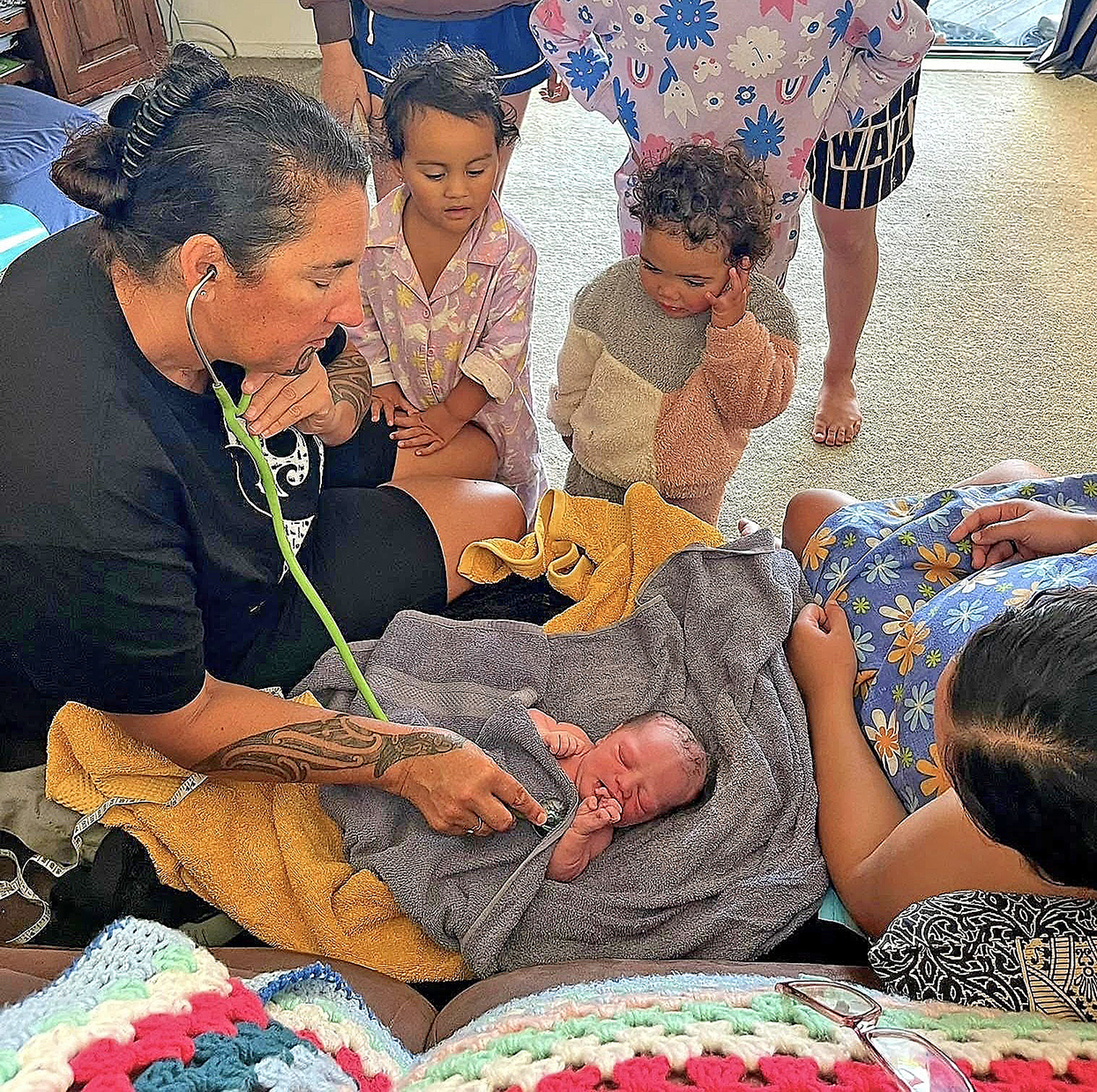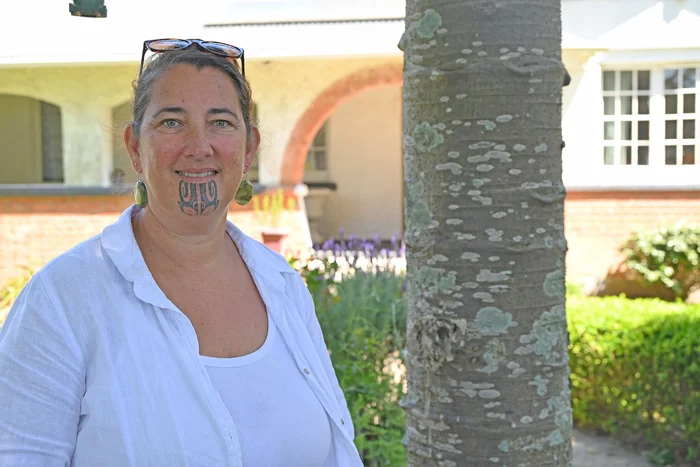Increasing home birth awareness

HOME BIRTH ADVOCATE: Midwife Lisa Kelly with Rachel Tai and her baby, Te Kawanoa. Ms Tai, a first-time mama from Te Kaha, made an informed decision to birth at home surrounded by her whānau. She said it felt right being closer to her tipuna. Photo supplied
Paul Charman
Home Birth Awareness Week recently provided an opportunity to promote an alternative to limiting obstetric care to Whakatāne and Tauranga hospitals.
“The week, held at the end of October each year, raises awareness that birthing at home is a viable option for low-risk women,” Ōpōtiki midwife Lisa Kelly said.
“Home births place less burden on the healthcare system. Not going to hospital to have your baby saves tax dollars for the country and is most empowering at a personal level.
“Families simply choose their caregivers and stay home, creating a positive environment for birth. It is due to this environment that we need less intervention, and research confirms that it is a safer option for birthing.”
Ms Kelly said the Ōpōtiki district, including the coastline between Pōtaka and Kutarere, generated about 150 births per year on average. About two thirds of these were home births.
“There has been much publicity on the difficulties faced by families on the Coast obtaining transfers and so forth for obstetric care in Whakatāne and Tauranga.
“We are all about the families not having to travel, especially if the mother is considered low risk and not anticipating any complications.
“Why should women have to go through all the distress and the anxiety of trying to sort out travel to Tauranga Hospital?

“Even the trip to Whakatāne Hospital is a long way if coming from down the Coast.
“If you have an experienced caregiver such as the midwives who are available – who all do home births – then why not stay at home?”
Travel out of town requires good transportation and if family members go with, accommodation is required. The challenge of childcare remains if they stay behind.
“This travel creates a lot of issues to sort out on top of being pregnant, giving birth and looking after a newborn.
“These are things that you won’t have to think about at all if you stayed home with your family.”
Locals have been told the Whakatāne Obstetrics and Gynaecology Unit is expected to be fully staffed in March or April, moving from primary to secondary care. The unit will then be able to provide emergency or specialist care if it was required during pregnancy or intervention/support during labour and birth; Caesarian section for example.
“At the moment this is not available in Whakatāne – it’s an extra hour away in Tauranga,” said Ms Kelly.
“They are looking at having five obstetricians in Whakatāne – one has already started; we’re expecting a couple more by Christmas and the rest to start by March or April.
“Meanwhile, we are encouraging whānau to look at home birth as an option if they are low risk with good whānau support.”
Ms Kelly points out that birth is a normal life event.
“You’re not sick – you’re having a baby. For Māori as well, we can retrace our home births whakapapa to not that long ago.
“My grandmother was born at home in the 1930s, and I started to have my children at home.
“We were all birthing at home until colonisation and the medicalisation of birth took over and made us leave our land and have our babies in hospital.
“Part of this was that fathers were needlessly excluded – left in the waiting room throughout the 1940s, 1950s and 1960s.
“What we like to do is have dad involved in the whole birthing process. They can catch the baby as it is born and have the first hands on the child; the nannies and siblings are there to share that time as well. That time is very sacred – it’s tapu.
“So, to have an environment that is really nurturing is what you hope for, which logically can be your own home.”